Home>Furniture & Design>Bathroom Accessories>What To Have In A First Aid Kit For Camping
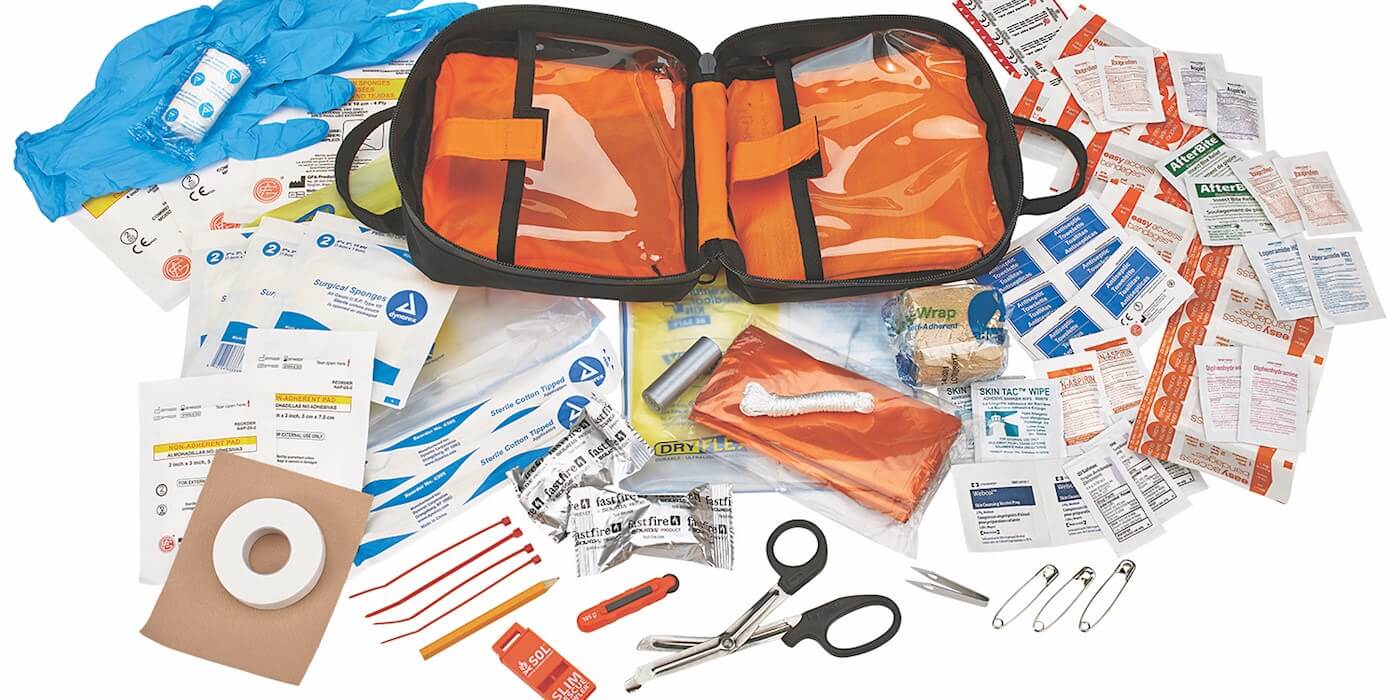

Bathroom Accessories
What To Have In A First Aid Kit For Camping
Modified: February 18, 2024
Ensure a safe and comfortable camping experience with the essential first aid kit items for your outdoor adventure. Be prepared with the right bathroom accessories for your camping trip.
(Many of the links in this article redirect to a specific reviewed product. Your purchase of these products through affiliate links helps to generate commission for Storables.com, at no extra cost. Learn more)
Bandages
Bandages are an essential component of any first aid kit, especially when it comes to camping. They are versatile and can be used to cover and protect wounds, control bleeding, and provide support to injured areas. When preparing a first aid kit for camping, it's crucial to include a variety of bandages to address different types of injuries that may occur in the great outdoors.
Read more: Why Is A First Aid Kit Important To Have
Types of Bandages to Include:
-
Adhesive Bandages: Also known as "band-aids," these are ideal for minor cuts, scrapes, and blisters. They come in various sizes and shapes, making them suitable for different wound sizes and locations.
-
Gauze Rolls: These are indispensable for securing dressings and providing support for sprains and strains. They can also be used to create a makeshift sling or wrap larger wounds.
-
Sterile Gauze Pads: These are highly absorbent and non-adherent, making them perfect for covering larger wounds and applying antiseptic ointments.
-
Elastic Bandages: Also known as "ace bandages," these are excellent for providing compression and support for sprains, strains, and joint injuries.
Considerations When Choosing Bandages:
-
Size and Quantity: It's important to have a variety of bandage sizes to accommodate different wound sizes. Additionally, including an ample supply of bandages ensures that you are prepared for multiple injuries or incidents.
-
Hypoallergenic Materials: Opt for bandages made from hypoallergenic materials to minimize the risk of allergic reactions, especially when dealing with individuals who have sensitive skin.
-
Waterproof Options: When camping, exposure to water is inevitable. Including waterproof bandages ensures that wounds remain protected even in wet conditions.
Tips for Using Bandages in a Camping Setting:
-
Clean and Dry Wounds: Before applying any bandage, ensure that the wound is clean and dry to prevent infection.
-
Proper Wrapping Technique: When using gauze rolls or elastic bandages, it's essential to apply them with the right amount of tension to provide support without cutting off circulation.
-
Regular Inspection and Changing: Check and change bandages regularly, especially in outdoor environments where exposure to dirt and moisture can compromise their effectiveness.
By including a variety of bandages in your camping first aid kit, you can be better prepared to address a wide range of injuries and emergencies that may arise during outdoor adventures. Whether it's a minor cut from a hiking trail or a sprained ankle from uneven terrain, having the right bandages on hand can make a significant difference in providing immediate care and comfort until further medical assistance is available.
Key Takeaways:
- Be prepared for outdoor adventures by including bandages, antiseptic wipes, and gauze pads in your camping first aid kit. They help address a wide range of injuries and promote proper wound care in remote settings.
- Including pain relievers, antihistamines, and a thermometer in your camping first aid kit can help manage discomfort, allergic reactions, and monitor body temperature during outdoor activities.
Antiseptic wipes
Antiseptic wipes are a crucial component of a well-prepared camping first aid kit. These disposable wipes are designed to clean and disinfect minor wounds, cuts, and scrapes, helping to prevent infection and promote healing in outdoor environments where access to medical facilities may be limited. When venturing into the wilderness, it's essential to include antiseptic wipes in your first aid kit to ensure proper wound care and reduce the risk of complications from outdoor injuries.
Read more: What’s In A First Aid Kit
Benefits of Antiseptic Wipes:
-
Disinfection: Antiseptic wipes contain disinfecting agents such as alcohol or benzalkonium chloride, which effectively cleanse the affected area, removing dirt, debris, and bacteria that may have entered the wound.
-
Convenience: The individual packaging of antiseptic wipes makes them convenient for outdoor use. They are portable, lightweight, and easy to access, allowing for quick and efficient wound cleaning without the need for additional supplies or water.
-
Reduced Risk of Infection: Properly cleaning wounds with antiseptic wipes reduces the risk of infection, particularly in outdoor settings where exposure to dirt, insects, and other environmental contaminants is common.
-
Versatility: Antiseptic wipes are suitable for various types of injuries, from minor cuts and abrasions to insect bites and stings. Their versatility makes them a valuable addition to any camping first aid kit.
Considerations When Selecting Antiseptic Wipes:
-
Alcohol-Free Options: For individuals with sensitive skin or children, choosing alcohol-free antiseptic wipes can minimize the risk of skin irritation while still providing effective wound cleansing.
-
Gentle Formulation: Look for antiseptic wipes with a gentle formulation to ensure that they are suitable for use on different skin types, including those prone to sensitivity.
-
Long Shelf Life: Opt for antiseptic wipes with a long shelf life to ensure their effectiveness and potency over an extended period, especially when stored in varying environmental conditions during camping trips.
Best Practices for Using Antiseptic Wipes:
-
Gentle Application: When using antiseptic wipes, apply gentle pressure to clean the wound without causing additional discomfort or trauma to the injured area.
-
Thorough Cleaning: Ensure thorough cleaning of the entire affected area, extending beyond the visible wound, to remove any potential contaminants and reduce the risk of infection.
-
Proper Disposal: After use, dispose of the antiseptic wipe properly to maintain cleanliness and hygiene in the camping environment.
By including antiseptic wipes in your camping first aid kit, you can effectively address minor injuries and promote proper wound care, enhancing the overall safety and well-being of individuals during outdoor excursions. These wipes serve as a valuable resource for maintaining hygiene and mitigating the risk of infection, allowing campers to enjoy their outdoor adventures with greater peace of mind.
Gauze pads
Gauze pads are indispensable components of a well-equipped camping first aid kit, serving as versatile and absorbent dressings for a wide range of injuries and wound types. When venturing into the great outdoors, it's essential to include gauze pads in your first aid arsenal to address potential injuries effectively and promote proper wound care in remote settings.
Read more: What Is Inside A First Aid Kit
Versatility and Absorbency
Gauze pads are designed to absorb fluids and provide a protective covering for wounds, making them suitable for various injury scenarios encountered during camping activities. Whether it's a minor cut, a larger abrasion, or a puncture wound, gauze pads offer the versatility to accommodate different wound sizes and types, ensuring that proper care can be administered when medical facilities are not readily accessible.
Non-Adherent and Sterile Properties
One of the key advantages of gauze pads is their non-adherent nature, which prevents them from sticking to the wound during dressing changes, minimizing discomfort and trauma to the injured area. Additionally, sterile gauze pads maintain a hygienic environment for wound healing, reducing the risk of infection and promoting optimal recovery, particularly in outdoor settings where exposure to environmental contaminants is a concern.
Considerations When Selecting Gauze Pads
When preparing a camping first aid kit, it's important to consider the following factors when selecting gauze pads:
-
Size and Quantity: Including an assortment of gauze pad sizes ensures that you are prepared to address different wound dimensions effectively. Additionally, having an ample supply of gauze pads allows for multiple dressing changes and the management of multiple injuries.
-
Sterility: Opt for individually packaged sterile gauze pads to maintain their cleanliness and integrity, especially in outdoor environments where exposure to dirt and debris is inevitable.
-
Absorbency: Look for gauze pads with high absorbency to effectively manage wound exudate and promote a moist healing environment, which is conducive to the natural healing process.
Best Practices for Using Gauze Pads
When applying gauze pads in a camping setting, it's essential to adhere to best practices to ensure optimal wound care:
-
Proper Wound Cleaning: Before applying a gauze pad, ensure that the wound is thoroughly cleaned and dried to minimize the risk of infection and promote effective healing.
-
Secure Dressing Application: Use adhesive tape or bandages to secure the gauze pad in place, ensuring that it remains stable and provides adequate coverage for the wound.
-
Regular Inspection and Changing: Monitor the condition of the gauze pad and the wound it covers, changing the dressing as needed to maintain cleanliness and promote healing.
By including gauze pads in your camping first aid kit, you can effectively address a wide range of injuries and provide essential wound care in outdoor environments. Their versatility, absorbency, and sterile properties make them invaluable assets for managing injuries and promoting the well-being of individuals during camping adventures.
Read more: What Is The Purpose Of A First Aid Kit?
Adhesive tape
Adhesive tape is a fundamental component of a comprehensive camping first aid kit, playing a pivotal role in securing dressings, providing support for injured areas, and immobilizing joints in the event of sprains or strains. When preparing for outdoor adventures, including adhesive tape in your first aid arsenal is essential for addressing a diverse range of injuries and ensuring proper wound care in remote and unpredictable environments.
Versatility and Stability
Adhesive tape, also known as medical tape, offers versatility in securing dressings and bandages of various sizes and shapes. Its adhesive properties provide a reliable and stable hold, preventing dressings from shifting or coming loose, especially during outdoor activities that involve movement and physical exertion. Additionally, adhesive tape can be used to create makeshift splints for stabilizing fractures or supporting injured limbs, offering crucial assistance in managing more severe injuries until professional medical help is accessible.
Types of Adhesive Tape
When selecting adhesive tape for your camping first aid kit, it's important to consider the following options based on their intended use and benefits:
-
Paper Tape: This gentle and breathable tape is suitable for securing dressings on sensitive or delicate skin, minimizing the risk of irritation or discomfort during extended wear.
-
Cloth Tape: Known for its durability and strong adhesive properties, cloth tape is ideal for providing robust support for joints and muscles, making it valuable for addressing sprains and strains encountered during outdoor activities.
-
Waterproof Tape: In outdoor environments where exposure to moisture is inevitable, waterproof adhesive tape ensures that dressings remain secure and protected, even in wet conditions, offering reliable adherence and protection against environmental elements.
Considerations When Choosing Adhesive Tape
When assembling your camping first aid kit, it's essential to consider the following factors when selecting adhesive tape:
-
Hypoallergenic Properties: Opt for hypoallergenic adhesive tape to minimize the risk of skin irritation, particularly when addressing injuries in individuals with sensitive skin or known allergies.
-
Width and Length: Including adhesive tape in varying widths and lengths ensures that you are equipped to secure different types of dressings and accommodate various injury scenarios effectively.
-
Ease of Application and Removal: Choose adhesive tape that is easy to apply and remove, facilitating efficient dressing changes and minimizing discomfort for the injured individual.
Read more: What Are 10 Items In A First Aid Kit?
Best Practices for Using Adhesive Tape
When utilizing adhesive tape in a camping setting, it's important to adhere to best practices to ensure optimal application and effectiveness:
-
Proper Preparation: Ensure that the skin is clean and dry before applying adhesive tape to promote optimal adherence and prevent skin irritation.
-
Gentle Application: Apply adhesive tape with the right amount of tension to provide support without compromising circulation or causing discomfort to the injured area.
-
Regular Monitoring: Check the condition of the adhesive tape and the underlying dressing regularly, making adjustments or replacements as needed to maintain proper wound care and support.
By including adhesive tape in your camping first aid kit, you can effectively address a wide range of injuries and provide essential support and stability in outdoor environments. Its versatility, strong adherence, and ability to secure dressings make it an indispensable asset for promoting the well-being and safety of individuals during camping adventures.
Tweezers
Tweezers are an indispensable tool in any camping first aid kit, offering precision and versatility for addressing a variety of situations that may arise in outdoor environments. These small, handheld instruments provide the ability to remove splinters, thorns, ticks, and other foreign objects from the skin, making them essential for maintaining hygiene and addressing minor injuries during camping adventures.
Benefits of Including Tweezers
The inclusion of tweezers in a camping first aid kit offers several notable benefits, including:
-
Precision Extraction: Tweezers allow for the precise and controlled removal of foreign objects embedded in the skin, minimizing the risk of further injury or infection.
-
Tick Removal: In areas where ticks are prevalent, such as wooded or grassy regions, tweezers are essential for safely removing these parasites to reduce the risk of tick-borne illnesses.
-
Splinter Removal: When exploring outdoor environments, exposure to wooden surfaces or vegetation increases the likelihood of encountering splinters. Tweezers provide an effective means of extracting splinters, preventing discomfort and potential infection.
-
First Aid Versatility: Beyond addressing skin-related issues, tweezers can also be used for tasks such as handling small first aid materials, such as removing debris from wounds or applying ointments with precision.
Considerations When Selecting Tweezers
When choosing tweezers for a camping first aid kit, it's important to consider the following factors:
-
Material and Design: Opt for tweezers made from high-quality, durable materials such as stainless steel, ensuring that they are robust and resistant to corrosion in outdoor environments.
-
Precision Tip: Select tweezers with fine, pointed tips to facilitate accurate and efficient extraction of foreign objects, allowing for delicate and controlled handling.
-
Size and Portability: Compact and lightweight tweezers are ideal for camping first aid kits, as they can be easily stored and carried, adding minimal bulk to the overall kit.
Read more: What To Put In A Hiking First Aid Kit
Best Practices for Using Tweezers
When utilizing tweezers in a camping setting, it's essential to adhere to best practices to ensure safe and effective extraction:
-
Sterilization: Prior to use, sterilize the tweezers with alcohol wipes or an antiseptic solution to minimize the risk of introducing bacteria or contaminants to the extraction site.
-
Gentle Handling: Exercise care and gentleness when using tweezers to avoid causing additional trauma to the skin or exacerbating the injury.
-
Complete Extraction: Ensure that the entire foreign object, such as a splinter or tick, is fully extracted from the skin to prevent residual fragments from causing irritation or infection.
By including tweezers in a camping first aid kit, individuals can effectively address minor injuries and maintain hygiene in outdoor settings, enhancing their preparedness and ability to provide essential care during camping excursions. The precision and versatility of tweezers make them a valuable asset for promoting the well-being and safety of individuals engaging in outdoor activities.
Scissors
Scissors are a vital tool in any camping first aid kit, offering multifunctional utility for addressing a wide array of medical and non-medical needs in outdoor settings. These versatile cutting instruments provide the means to manage various situations, from trimming bandages and dressings to handling materials for improvised repairs and crafting. When venturing into the wilderness, including a pair of durable and reliable scissors in your first aid kit is essential for ensuring preparedness and practicality during camping adventures.
Medical Applications
In the realm of first aid and medical care, scissors serve as indispensable instruments for managing injuries and administering essential treatments. Their primary medical applications include:
-
Bandage and Dressing Trimming: Scissors enable the precise and efficient trimming of bandages and dressings to fit the specific dimensions of wounds, ensuring optimal coverage and protection.
-
Clothing and Material Cutting: In emergency situations where clothing needs to be removed to access and treat injuries, scissors provide a safe and controlled means of cutting through fabric without causing additional harm to the individual.
-
Splint and Tape Preparation: When addressing fractures or sprains, scissors facilitate the preparation of splints and the cutting of medical tape, allowing for the stabilization and support of injured limbs.
Non-Medical Uses
Beyond their medical applications, scissors offer practical utility for addressing non-medical needs and enhancing overall preparedness during camping trips. Their versatility extends to tasks such as:
-
Gear Repair and Modification: Scissors can be used to trim and modify gear, such as cutting ropes, cords, or fabric, to facilitate repairs or adjustments to camping equipment.
-
Crafting and Utility: In recreational and practical scenarios, scissors serve as valuable tools for crafting, such as cutting materials for improvised shelter construction or creating makeshift tools and implements.
-
Food Preparation: When engaging in outdoor cooking and meal preparation, scissors provide a convenient means of cutting and portioning food items, contributing to the overall efficiency of campsite activities.
Read more: What To Put In A First Aid Kit For A Car
Considerations When Selecting Scissors
When choosing scissors for a camping first aid kit, several factors should be taken into account to ensure their effectiveness and suitability for outdoor use:
-
Size and Portability: Compact and lightweight scissors are ideal for camping first aid kits, as they offer practicality and ease of storage without adding unnecessary bulk.
-
Durable Construction: Opt for scissors made from high-quality materials, such as stainless steel, to ensure durability and resistance to corrosion in outdoor environments.
-
Safety Features: Select scissors with rounded or blunt tips to minimize the risk of accidental punctures or injuries during use, particularly in situations where visibility may be limited.
Best Practices for Using Scissors
When utilizing scissors in a camping setting, it's important to adhere to best practices to ensure safe and effective usage:
-
Safe Handling: Exercise caution and mindfulness when handling scissors, particularly when working in close proximity to individuals or when addressing injuries.
-
Proper Maintenance: Regularly inspect and maintain the condition of the scissors, ensuring that they remain sharp and functional for their intended applications.
-
Secure Storage: Store the scissors in a protective case or sheath within the first aid kit to prevent accidental damage and to maintain their integrity for future use.
By including a pair of versatile and durable scissors in your camping first aid kit, you can effectively address a wide range of medical and non-medical needs, enhancing your readiness and capability to manage diverse situations encountered during outdoor excursions. The practicality and utility of scissors make them an essential asset for promoting safety, preparedness, and overall well-being in camping environments.
Pain relievers
Pain relievers are a crucial addition to any camping first aid kit, providing essential relief from discomfort and pain associated with various injuries and ailments that may occur during outdoor adventures. When exploring the wilderness, individuals are exposed to a range of physical activities and environmental factors that can lead to minor aches, pains, and discomfort. Including pain relievers in the first aid kit ensures that individuals have access to effective relief, allowing them to manage discomfort and continue enjoying their outdoor pursuits.
Types of Pain Relievers to Consider
When selecting pain relievers for a camping first aid kit, it's important to consider the following options based on their intended use and benefits:
-
Acetaminophen: This widely used pain reliever and fever reducer is suitable for addressing mild to moderate pain, making it valuable for managing headaches, muscle aches, and discomfort associated with minor injuries.
-
Ibuprofen: Known for its anti-inflammatory properties, ibuprofen is effective in reducing pain, swelling, and fever. It is particularly beneficial for addressing muscle strains, joint pain, and discomfort resulting from outdoor activities.
-
Aspirin: Aspirin serves as a pain reliever, fever reducer, and anti-inflammatory agent, making it a versatile option for managing various types of pain, including headaches, toothaches, and minor injuries.
Read more: What Should Be In A Dog First Aid Kit?
Considerations When Selecting Pain Relievers
When assembling a camping first aid kit, it's essential to consider the following factors when selecting pain relievers:
-
Individual Health Considerations: Take into account any pre-existing medical conditions, allergies, or contraindications that may influence the choice of pain relievers for individuals in the camping group.
-
Versatility and Effectiveness: Choose pain relievers that offer broad-spectrum relief and are effective in managing different types of pain commonly encountered during outdoor activities.
-
Dosage and Administration: Ensure that the selected pain relievers are available in appropriate dosages and forms for easy administration, considering factors such as age and weight when determining suitable doses.
Best Practices for Using Pain Relievers
When incorporating pain relievers into a camping first aid kit, it's important to adhere to best practices for their safe and effective usage:
-
Clear Labeling and Storage: Clearly label and store pain relievers in their original packaging within the first aid kit, providing clear instructions for dosage and usage to ensure safe administration.
-
Monitoring and Follow-Up: Keep track of pain reliever usage, monitoring individuals for any adverse reactions or side effects, and providing appropriate follow-up care as needed.
-
Compliance with Regulations: Adhere to local regulations and guidelines regarding the storage and administration of pain relievers, ensuring legal compliance and safety for all individuals in the camping group.
By including a selection of pain relievers in the camping first aid kit, individuals can effectively manage discomfort and minor pain, enhancing their ability to address common ailments and injuries encountered during outdoor activities. The presence of pain relievers contributes to the overall preparedness and well-being of individuals, allowing them to navigate outdoor challenges with greater comfort and confidence.
Antihistamines
Antihistamines are essential components of a camping first aid kit, offering valuable relief from allergic reactions and symptoms related to insect bites, stings, and environmental allergens commonly encountered in outdoor settings. These medications work by blocking the action of histamine, a chemical released by the body during allergic reactions, thereby alleviating symptoms such as itching, swelling, and hives. When exploring the wilderness, individuals are exposed to various allergens and insect encounters, making the inclusion of antihistamines in the first aid kit crucial for managing allergic reactions and promoting overall well-being during camping adventures.
Types of Antihistamines to Consider
When selecting antihistamines for a camping first aid kit, it's important to consider the following options based on their intended use and benefits:
-
Diphenhydramine: This widely used antihistamine provides effective relief from allergic reactions, itching, and discomfort caused by insect bites and stings. It also has sedative properties, making it beneficial for managing allergic reactions that may interfere with sleep during camping trips.
-
Cetirizine: Known for its non-drowsy formulation, cetirizine offers long-lasting relief from allergy symptoms, including sneezing, runny nose, and itchy eyes. Its non-sedating nature makes it suitable for daytime use without causing drowsiness or impairment.
-
Loratadine: Another non-drowsy antihistamine, loratadine provides effective relief from allergy symptoms and is particularly beneficial for individuals who require continuous allergy management without experiencing sedative effects.
Read more: What To Put In A Travel First Aid Kit
Considerations When Selecting Antihistamines
When assembling a camping first aid kit, it's essential to consider the following factors when selecting antihistamines:
-
Individual Allergies and Sensitivities: Take into account any known allergies or sensitivities to specific antihistamines within the camping group, ensuring that the selected medications are safe for all individuals.
-
Onset and Duration of Action: Choose antihistamines with rapid onset and long-lasting relief to effectively manage allergic reactions and symptoms encountered during outdoor activities, providing sustained comfort for individuals.
-
Age-Appropriate Formulations: Ensure that the selected antihistamines are suitable for individuals of different age groups, considering pediatric formulations for children and appropriate dosages for adults.
Best Practices for Using Antihistamines
When incorporating antihistamines into a camping first aid kit, it's important to adhere to best practices for their safe and effective usage:
-
Clear Dosage Instructions: Clearly label and provide dosage instructions for each antihistamine within the first aid kit, ensuring that individuals can administer the medications safely and accurately.
-
Monitoring for Adverse Reactions: Keep track of antihistamine usage, monitoring individuals for any adverse reactions or side effects, and providing appropriate follow-up care as needed.
-
Storage and Accessibility: Store antihistamines in their original packaging within the first aid kit, ensuring that they are easily accessible and protected from environmental factors that may affect their potency.
By including a selection of antihistamines in the camping first aid kit, individuals can effectively manage allergic reactions and symptoms, promoting greater comfort and well-being during outdoor excursions. The presence of antihistamines enhances the overall preparedness and safety of individuals, allowing them to navigate outdoor challenges with confidence and peace of mind.
Thermometer
A reliable and accurate thermometer is an indispensable tool in any camping first aid kit, providing the means to monitor body temperature and detect potential signs of fever or hypothermia in outdoor environments. When venturing into the wilderness, individuals are exposed to fluctuating weather conditions and physical exertion, making it essential to include a thermometer in the first aid kit to assess and address temperature-related concerns effectively.
Importance of Temperature Monitoring
Monitoring body temperature is crucial for identifying and managing potential health issues that may arise during camping activities. A thermometer enables individuals to assess their own or others' body temperature, providing valuable insights into the presence of fever, heat-related illnesses, or hypothermia. In outdoor settings where access to medical facilities may be limited, the ability to accurately measure body temperature empowers individuals to take proactive measures in addressing temperature-related concerns and seeking appropriate medical assistance if necessary.
Types of Thermometers for Camping
When selecting a thermometer for a camping first aid kit, it's important to consider the following options based on their suitability for outdoor use and ease of operation:
-
Digital Thermometers: These compact and user-friendly thermometers offer quick and accurate temperature readings, making them ideal for outdoor settings where convenience and efficiency are paramount. Digital thermometers are often designed for oral, axillary, or rectal use, providing versatility in temperature measurement methods.
-
Forehead Thermometers: Forehead thermometers utilize infrared technology to measure body temperature without direct skin contact, offering a hygienic and non-invasive means of temperature assessment. Their ease of use and suitability for all age groups make them valuable additions to camping first aid kits.
-
Ear Thermometers: Also known as tympanic thermometers, ear thermometers provide rapid and reliable temperature readings, particularly useful for assessing the body temperature of individuals, including children, in outdoor environments. Their compact size and ease of use make them practical for camping first aid applications.
Considerations When Selecting a Thermometer
When choosing a thermometer for a camping first aid kit, it's essential to consider the following factors to ensure its effectiveness and suitability for outdoor use:
-
Durability and Portability: Opt for a thermometer that is durable and portable, capable of withstanding outdoor conditions and providing reliable performance during camping activities.
-
Battery-Powered Operation: Select a thermometer that operates on readily available and replaceable batteries, ensuring that it remains functional even in environments where access to power sources may be limited.
-
Water-Resistant Design: Choose a thermometer with a water-resistant or waterproof design to withstand exposure to moisture and environmental elements commonly encountered during outdoor excursions.
Best Practices for Using a Thermometer
When utilizing a thermometer in a camping setting, it's important to adhere to best practices to ensure accurate and reliable temperature assessment:
-
Proper Placement: Follow the manufacturer's instructions for the correct placement of the thermometer, whether it's oral, axillary, rectal, or temporal, to ensure accurate temperature readings.
-
Hygiene and Sanitization: Maintain proper hygiene and sanitation when using the thermometer, particularly for oral or rectal measurements, to minimize the risk of cross-contamination and ensure safe usage.
-
Regular Calibration: Periodically calibrate the thermometer according to the manufacturer's recommendations to maintain its accuracy and reliability for temperature assessment in outdoor environments.
By including a reliable and suitable thermometer in the camping first aid kit, individuals can effectively monitor body temperature and address temperature-related concerns, enhancing their preparedness and ability to manage potential health issues during outdoor adventures. The presence of a thermometer contributes to the overall safety and well-being of individuals, enabling them to monitor and respond to temperature fluctuations with confidence and proactive care.
First aid manual
A comprehensive first aid manual is an indispensable resource in any camping first aid kit, providing essential guidance and instructions for addressing a wide range of injuries, medical emergencies, and health-related concerns that may arise during outdoor activities. This comprehensive reference serves as a valuable tool for individuals, enabling them to acquire the knowledge and skills necessary to administer effective first aid and respond to various medical situations in remote and unpredictable environments.
The first aid manual typically encompasses a diverse array of topics, including wound care, fracture management, cardiopulmonary resuscitation (CPR), choking response, allergic reactions, heat-related illnesses, and cold weather injuries. It offers detailed step-by-step instructions, illustrations, and practical tips for assessing injuries, providing immediate care, and stabilizing individuals until professional medical assistance can be obtained. Additionally, the manual may include information on identifying and managing common outdoor hazards, such as insect bites, snake bites, and environmental emergencies, further enhancing individuals' preparedness and ability to navigate outdoor challenges.
Incorporating a first aid manual into the camping first aid kit empowers individuals to make informed decisions and take prompt action in response to medical emergencies. It serves as a valuable educational resource, equipping individuals with the knowledge to recognize signs and symptoms of various medical conditions, assess the severity of injuries, and implement appropriate first aid interventions. Furthermore, the manual fosters a sense of confidence and readiness, enabling individuals to approach outdoor activities with greater assurance and the capability to provide essential care when needed.
The content of the first aid manual is designed to be accessible and user-friendly, catering to individuals with varying levels of first aid knowledge and experience. It presents information in a clear and concise manner, utilizing visual aids and straightforward language to facilitate comprehension and retention of crucial first aid concepts. By offering practical guidance and relevant insights, the manual serves as a valuable companion for individuals engaging in camping, hiking, and other outdoor pursuits, enhancing their ability to respond effectively to medical incidents and emergencies.
In essence, the inclusion of a first aid manual in the camping first aid kit reflects a proactive approach to safety and well-being in outdoor environments. It serves as an educational resource, a reference guide, and a source of empowerment, enabling individuals to embrace outdoor adventures with greater confidence and the capability to provide essential first aid care when the need arises.
Frequently Asked Questions about What To Have In A First Aid Kit For Camping
Was this page helpful?
At Storables.com, we guarantee accurate and reliable information. Our content, validated by Expert Board Contributors, is crafted following stringent Editorial Policies. We're committed to providing you with well-researched, expert-backed insights for all your informational needs.
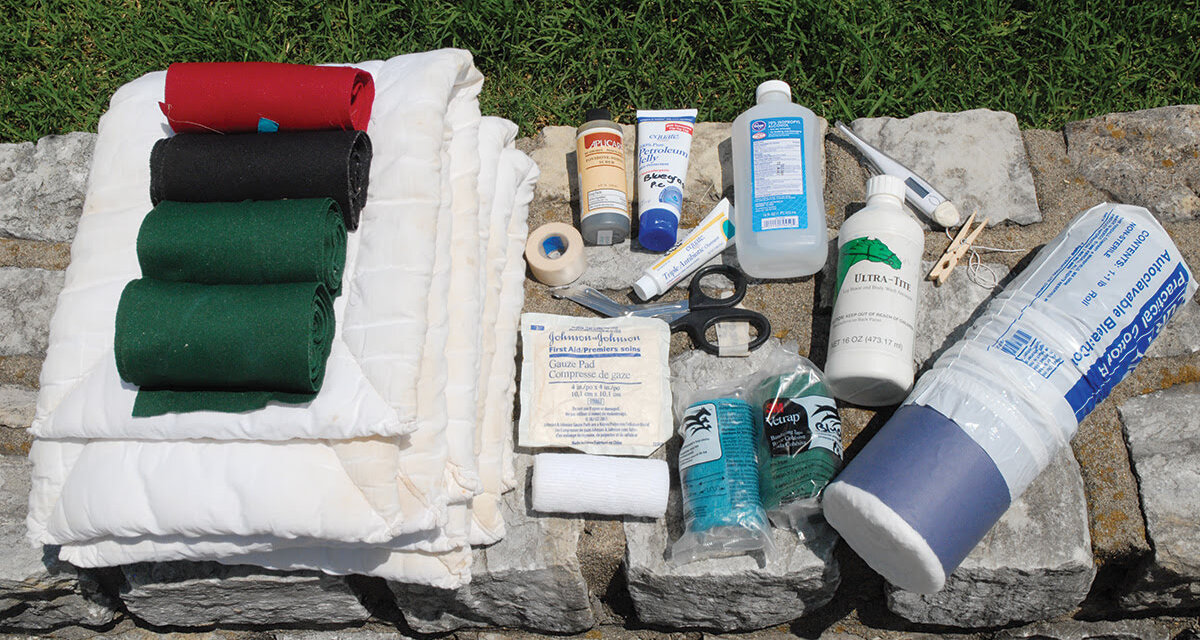
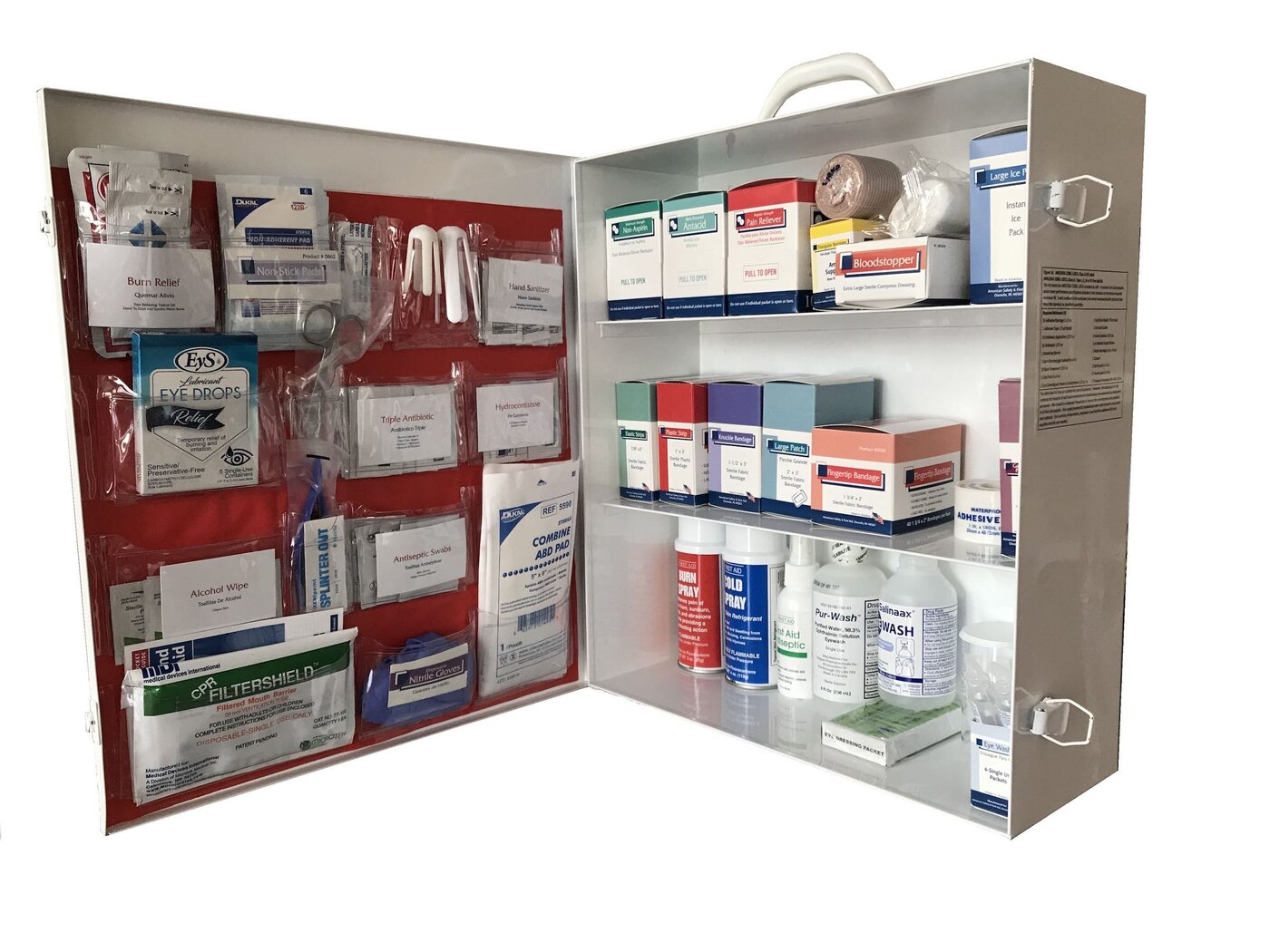
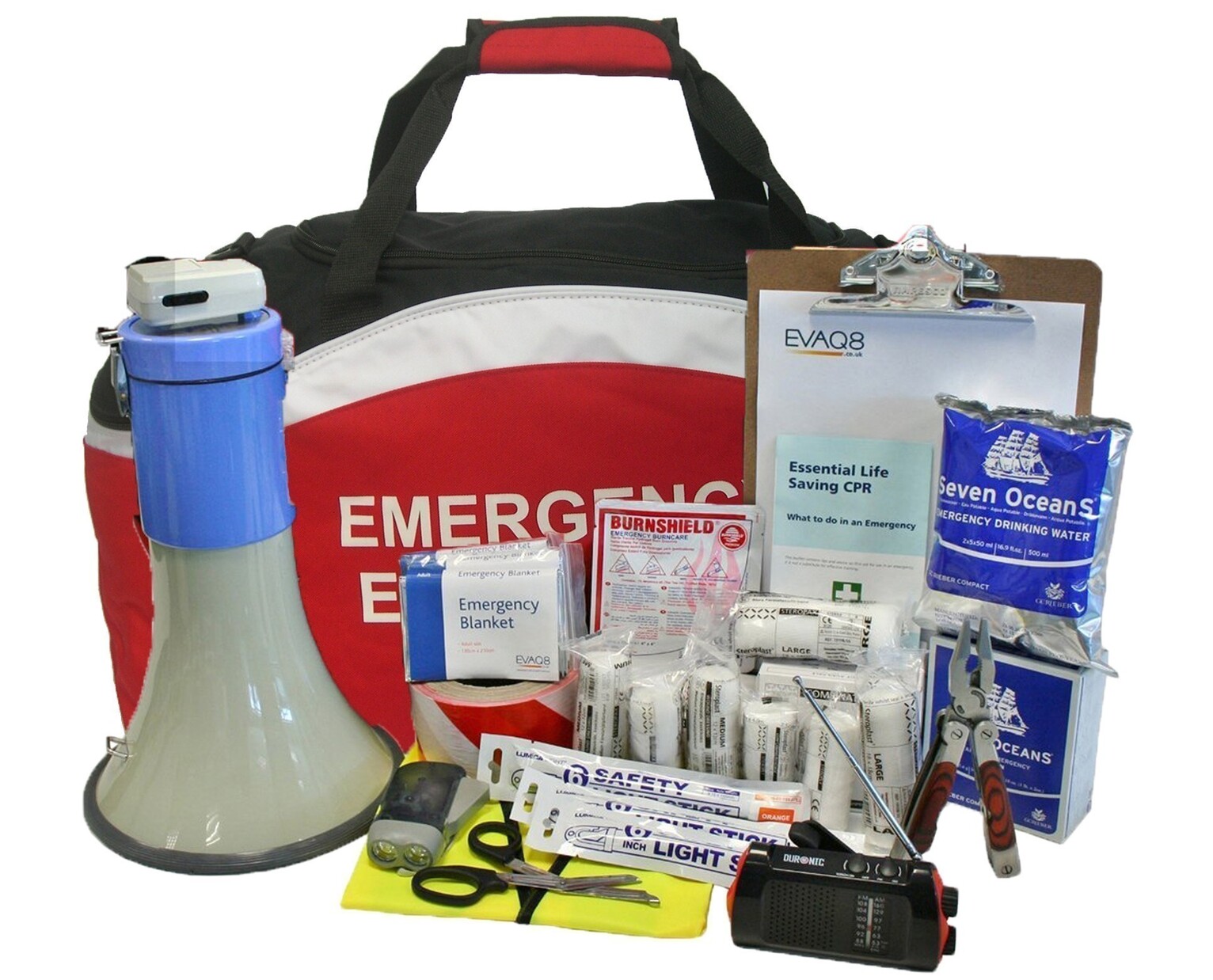
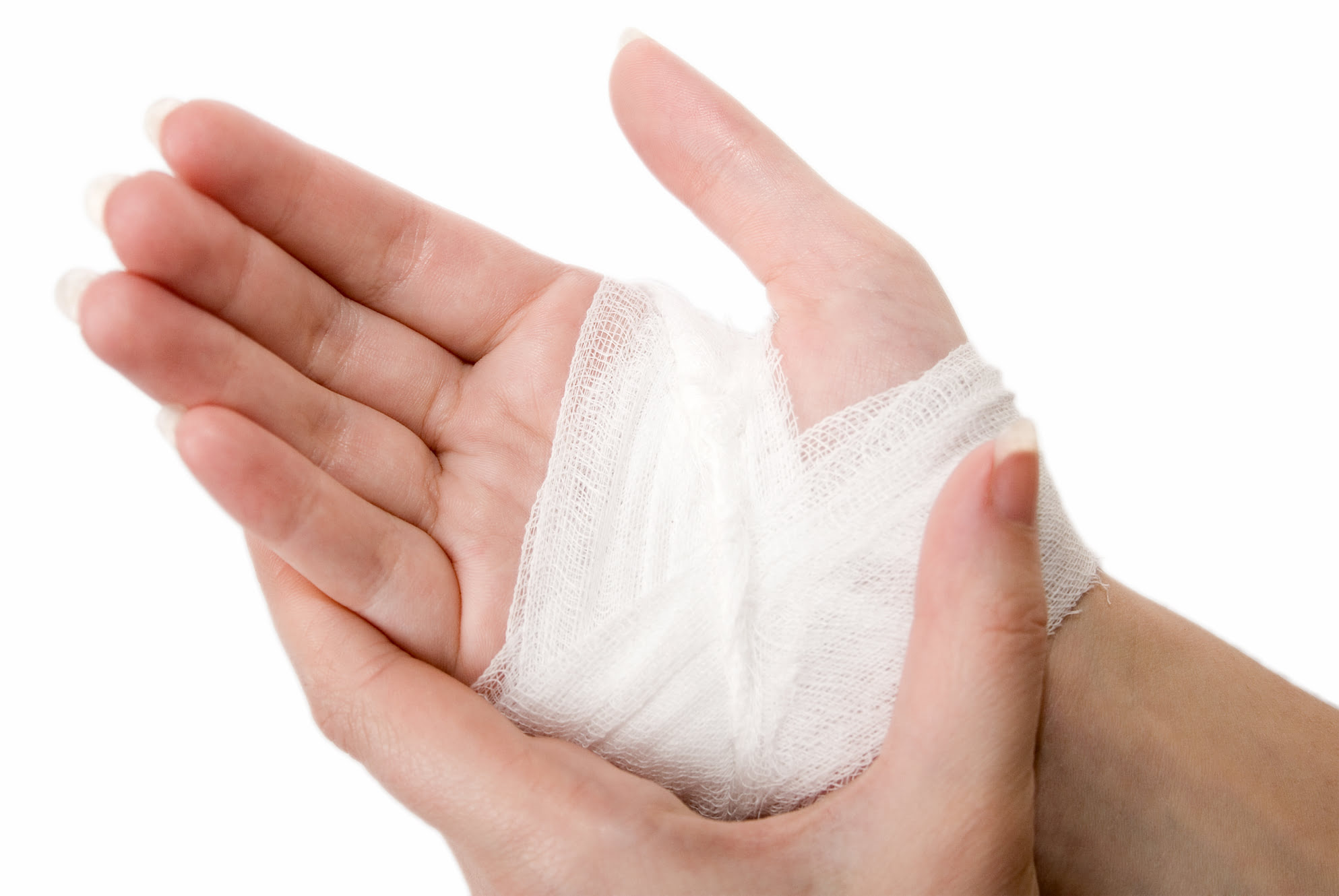
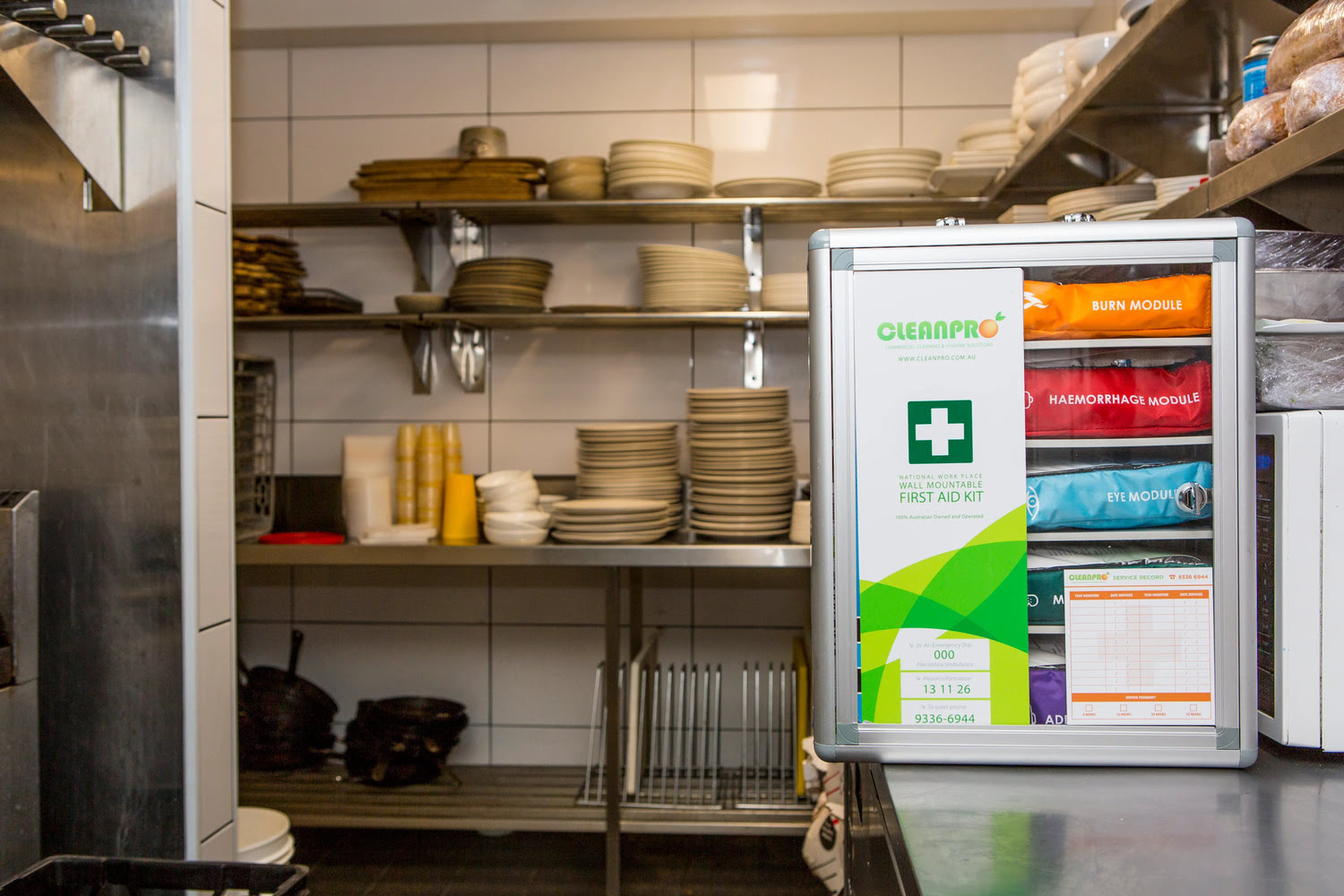
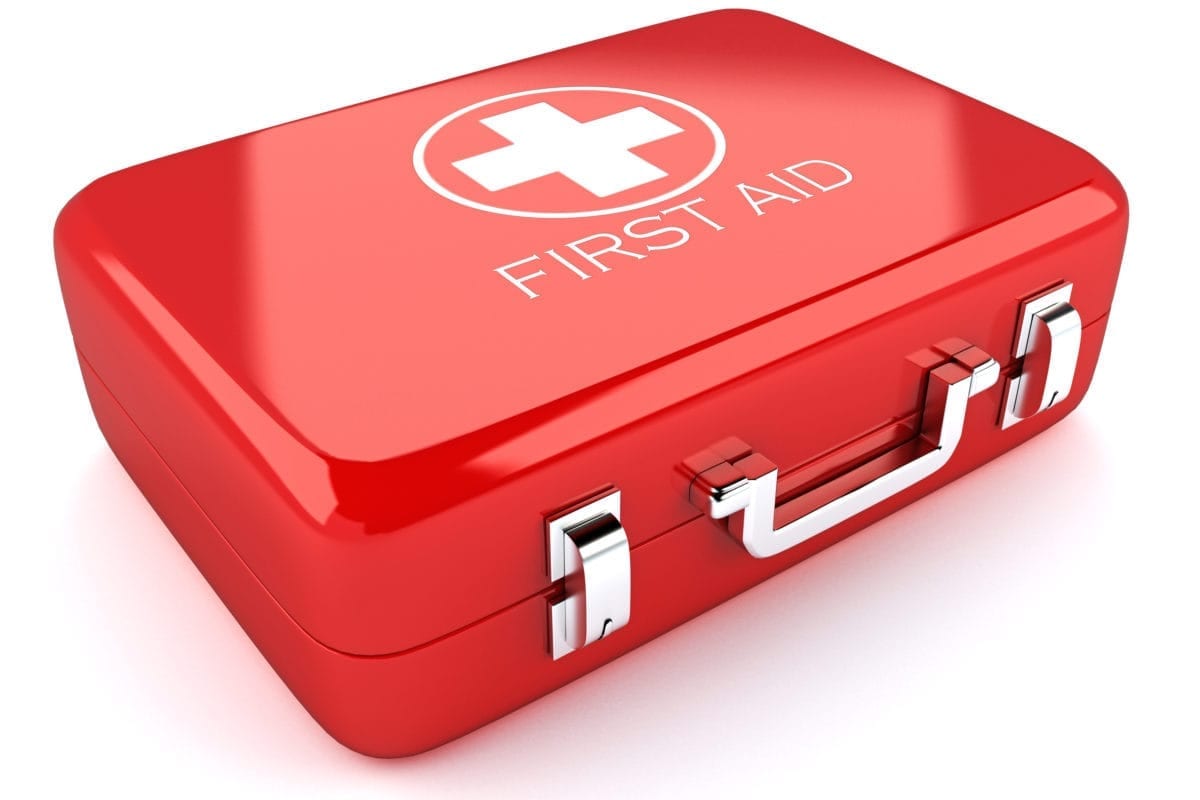

0 thoughts on “What To Have In A First Aid Kit For Camping”